Vitamin A5
-
Vitamin A5 helps activate something called the Retinoid X Receptor (RXR), which is like a central control panel or "master switch" for many important functions in the body.
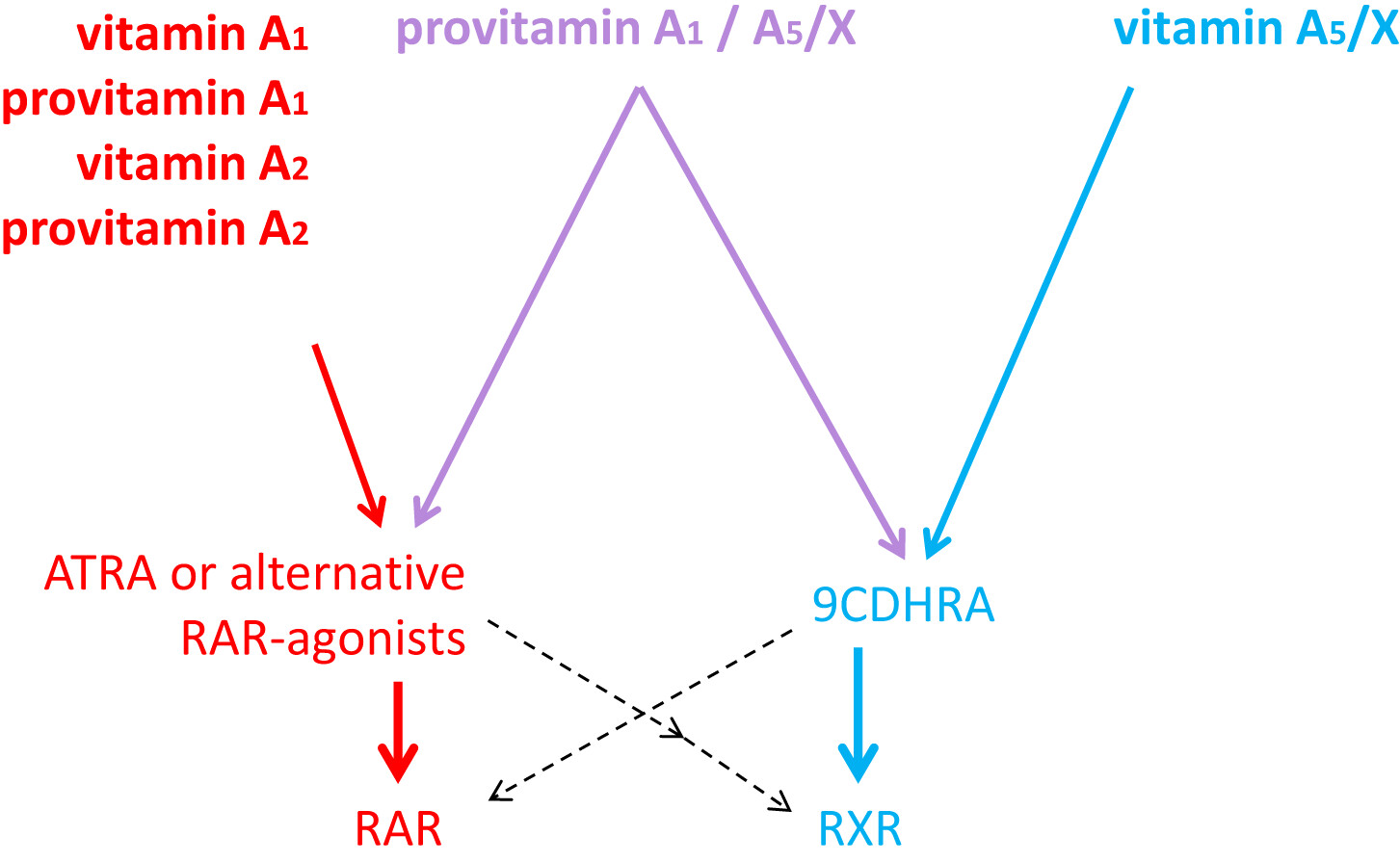
(source)Vitamin A5: Evidence, Definitions, Gaps, and Future Directions (2025)
How does vitamin A5 fit into the sometimes misleading definition of vitamin A? This review summarizes key findings and provides a comprehensive assessment of the current understanding, concluding that (a) vitamin A5 is a newly identified micronutrient that plays an important role in the prevention of diet-related diseases and (b) vitamin A5 is an important micronutrient that provides a plausible, mechanistic explanation for why a Western lifestyle diet low in vegetables and especially leafy vegetables can lead to a high prevalence of Western-lifestyle diseases, particularly neurological diseases and poor mental health.
Figure 5. Calculated intake of vitamin A5 by Europeans [64] based on the suggested 1.1 mg vitamin A5 / day intake recommendations
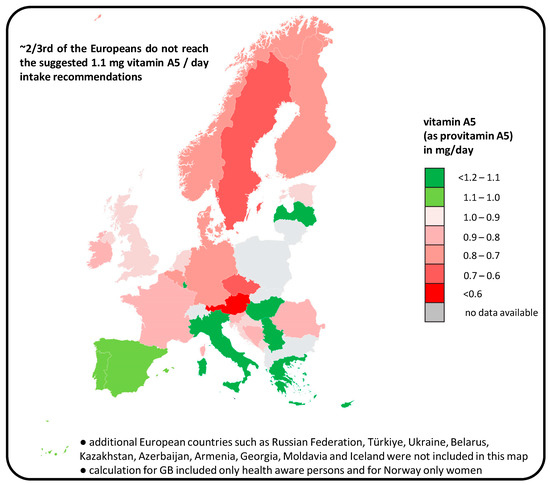
Figure 6. (A) Summary of the possible effects of a vitamin A5 deficiency [23], (B) Mechanisms of a primary and secondary vitamin A5 deficiency [23], (C) Relevant physiological mechanisms for vitamin A5-mediated effects in the brain and nerves.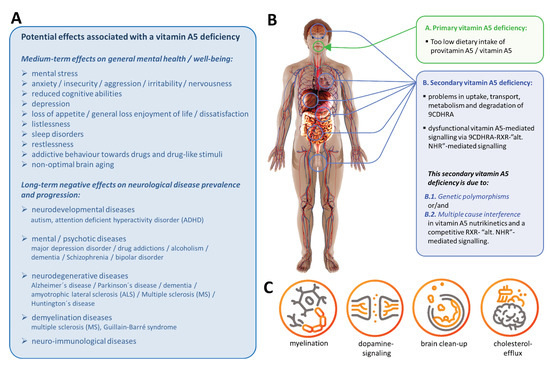
Figure 7. Summary of the effects of vitamin A5: from intake to nutri-kinetics, the mechanism of action to preventive effects on health based on a “step by step” confirmed cascade.
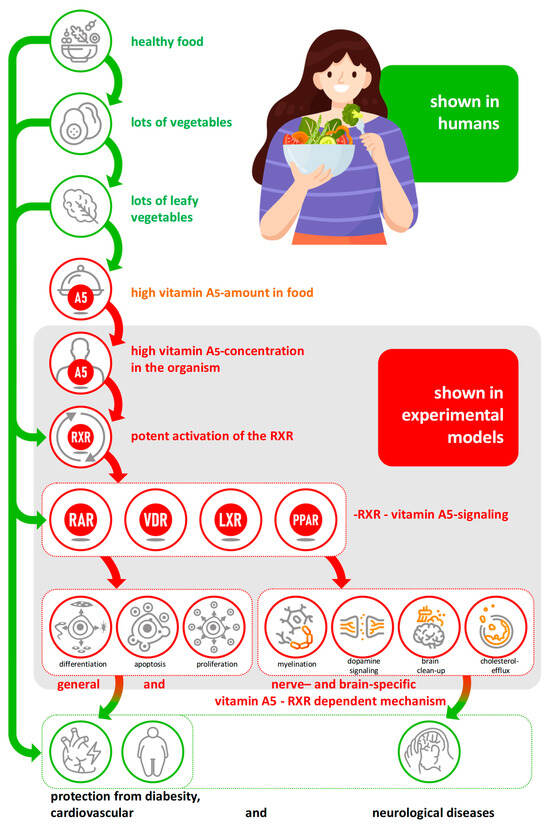
-
Abstract: A healthy and balanced diet is an important factor to assure a good functioning of the central and peripheral nervous system. Retinoid X receptor (RXR)-mediated signaling was identified as an important mechanism of transmitting major diet-dependent physiological and nutritional signaling such as the control of myelination and dopamine signaling. Recently, vitamin A5/X, mainly present in vegetables as provitamin A5/X, was identified as a new concept of a vitamin which functions as the nutritional precursor for enabling RXR-mediated signaling. The active form of vitamin A5/X, 9-cis-13,14-dehydroretinoic acid (9CDHRA), induces RXR-activation, thereby acting as the central switch for enabling various heterodimer-RXR-signaling cascades involving various partner heterodimers like the fatty acid and eicosanoid receptors/peroxisome proliferator–activated receptors (PPARs), the cholesterol receptors/liver X receptors (LXRs), the vitamin D receptor(VDR), and the vitamin A(1) receptors/retinoic acid receptors (RARs). Thus, nutritional supply of vitamin A5/X might be a general nutritional-dependent switch for enabling this large cascade of hormonal signaling pathways and thus appears important to guarantee an overall organism homeostasis. RXR-mediated signaling was shown to be dependent on vitamin A5/X with direct effects for beneficial physiological and neuro-protective functions mediated systemically or directly in the brain. In summary, through control of dopamine signaling, amyloid β-clearance, neuro-protection and neuro-inflammation, the vitamin A5/X – RXR – RAR – vitamin A(1)-signaling might be “one of” or even “the” critical factor(s) necessary for good mental health, healthy brain aging, as well as for preventing drug addiction and prevention of a large array of nervous system diseases. Likewise, vitamin A5/X – RXR – non-RAR-dependent signaling relevant for myelination/re-myelination and phagocytosis/brain cleanup will contribute to such regulations too. In this review we discuss the basic scientific background, logical connections and nutritional/pharmacological expert recommendations for the nervous system especially considering the ageing brain.
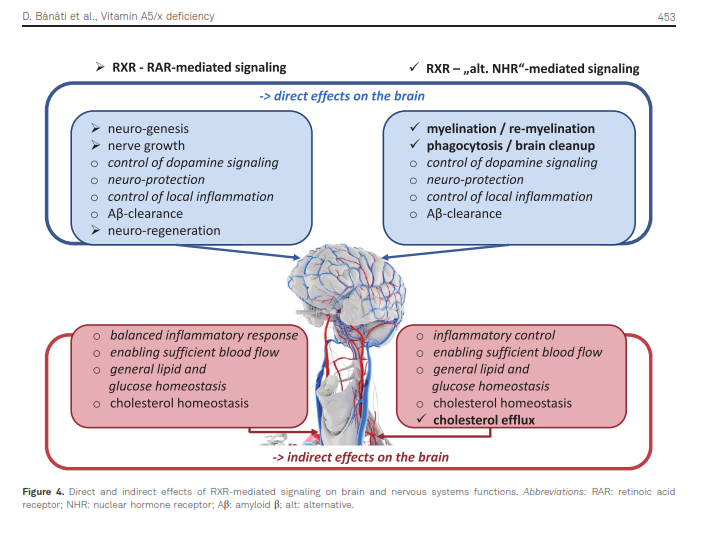
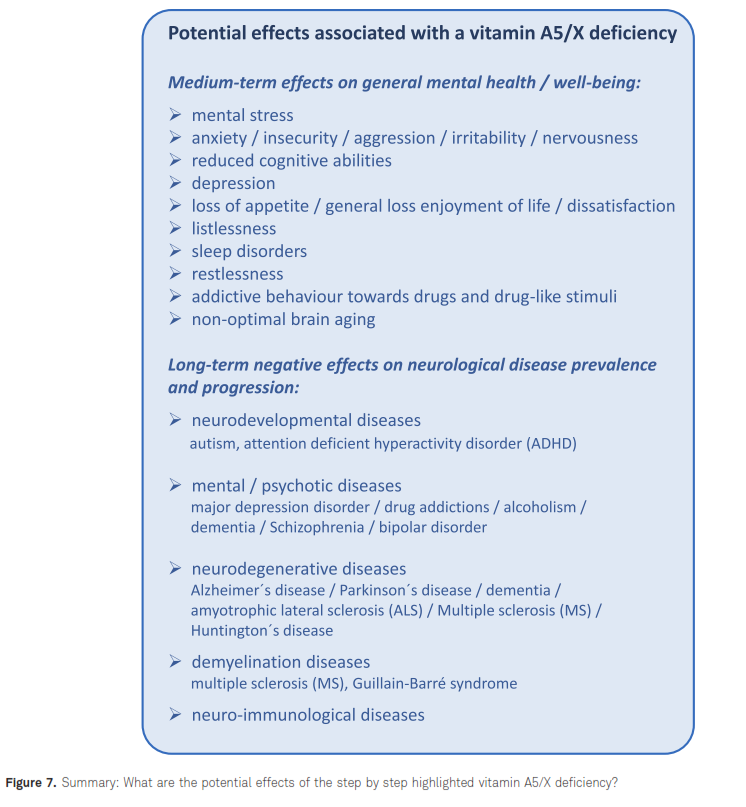
-
 L LucH referenced this topic on
L LucH referenced this topic on